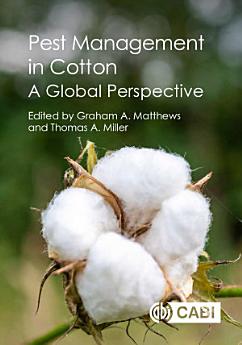Pest Management in Cotton: A Global Perspective
About this ebook
About the author
Graham Matthews was a research entomologist in Africa from 1958 -1967 working on cotton in Southern Rhodesia (now Zimbabwe) and Nysasland. He joined Imperial College in 1967 but was seconded to Malawi from 1968-72. He has since been involved with cotton during visits to many countries in Africa, including Egypt, Sudan, Cote D'Ivoire, and to India Pakistan, Uzbekistan, Turkmenistan, China and Australia. His research has been primarily on pesticide application technology, extending from agriculture to vector control.
Thomas Miller obtained a BA degree in Physics in 1962 and a PhD in entomology in 1967 at University of California, Riverside where he discovered the myogenicity of the American cockroach heart, shocking the field of comparative physiology. After postdoctorals at University of Illinois and University of Glasgow, Scotland, he returned to UC Riverside in 1969 where he pioneered neurotoxicology studies on insecticide mode of action on the housefly, invented a new overnight method of detecting insecticide resistance in pink bollworm and developed a transgenic pink bollworm with a lethal gene provided by Luke Alphey of the UK.








